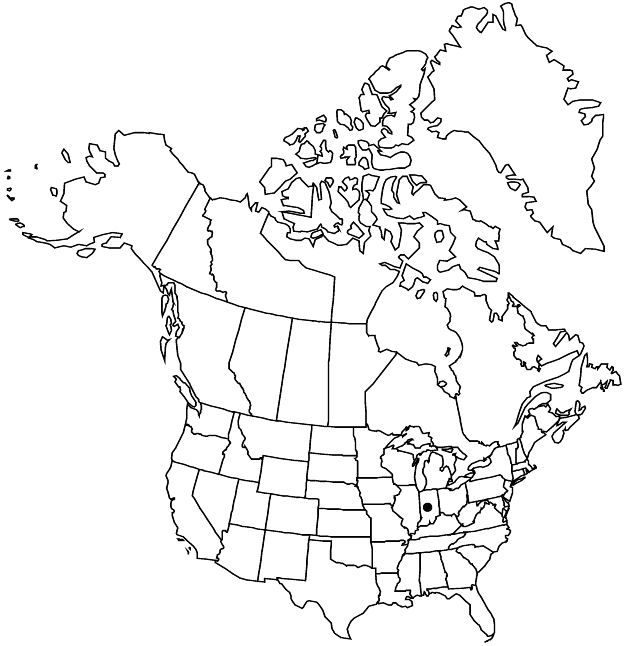Rhamnus arguta
Mém. Acad. Imp. Sci. Saint Pétersbourg, Sér. 7, 10(11): 6, figs. 48–51. 1866.
Shrubs or small trees, 2–3 m, usually unarmed, rarely armed with weak thorns. Branchlets dark purple or purple-red, glabrous. Leaves deciduous, usually opposite to subopposite, sometimes alternate, usually fascicled on short shoots, separating with age; petiole 10–28 mm; blade green abaxially, darker green adaxially, usually broadly ovate, ovate, oblong-ovate, or ovate-cordate, sometimes ovate-orbiculate, 2.5–6(–7) cm, herbaceous, base truncate to cordate, margins spinulose-serrate, apex obtuse-rounded or acute, both surfaces glabrous or abaxial puberulent along veins; secondary veins (3–)4–5 pairs, all diverging at nearly same angle or proximal diverging more obtusely. Inflorescences fascicles or flowers solitary. Pedicels 10–24(–30) mm. Sepals 4. Petals 4. Drupes black, globose to obovoid-globose, 7–10 mm; stones 3. 2n = 24.
Phenology: Flowering May–Jun.
Habitat: Disturbed sites.
Elevation: 200 m.
Distribution

Ind., Asia (China).
Discussion
The only report of Rhamnus arguta as naturalized in North America is from Jasper County (F. Swink and G. Wilhelm 1994). It was identified by Swink and Wilhelm as R. arguta var. velutina Handel-Mazzetti, which is puberulent on the petioles and leaf blades (at least abaxially on veins), but considerable populational variability apparently exists within the species.
Selected References
None.